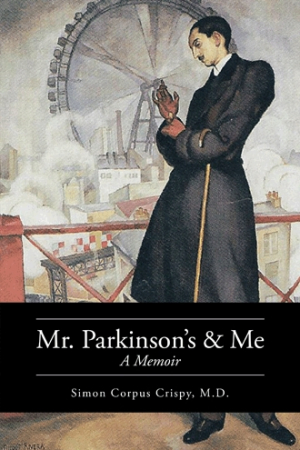Mr. Parkinson's and Me
A Memoir
With clear and straightforward descriptions, Crispy offers easily understood explanations and analogies.
Parkinson’s can be a diagnosis that destroys professional and personal lives. In Mr. Parkinson’s & Me, Simon Corpus Crispy, a geriatrician, tells the story of his early onset idiopathic Parkinson’s disease, its effects on his work and private life, and its impact on his faith and emotional well-being.
Crispy attended medical school in Mexico and, after completing his residency, landed a two-year stint as a fellow at a prestigious university in California. His career continued to build until he noticed a slight sensation in his foot when he was trying to sleep. He was forty-two years old. Initially diagnosed as stress, the symptoms got worse over time, resulting in depression as he tried without success to figure out the source of his trouble walking. Eventually, he sought out second and third opinions until he was finally accurately diagnosed with Parkinson’s. Over the course of the book, Crispy loses multiple jobs, divorces two wives, and ends an engagement, citing the disease as the primary cause. That same disease also gave him even more compassion for his geriatric patients as well as a better understanding of their suffering and his own faith in God.
Crispy’s descriptions are clear and straightforward, the jargon at a minimum when he explains Parkinson’s and its treatment, particularly the deep brain stimulation that helps to hold his symptoms in check. He offers explanations and analogies that make sense to people with little to no knowledge of the disease. This is one of the book’s great strengths. He writes:
Certain nerve cells in the brain die off for some inexplicable reason. This in turn triggers a loss of the neuro-transmitter dopamine, making it tough or even impossible for the still healthy nerve cells to talk with the rest of the brain. It’s like a really bad version of the cell phone ad where the guy keeps asking, “Can you hear me now?”
Crispy chooses a San Antonio storm in May 2013 as his relevant present, letting the weather mimic the turmoil of his experience, with both lulls and bouts of terror. He moves from this time into flashbacks. His presentation of relationships is less convincing. Crispy blames his disease for most of the deterioration in his personal life—a perception that no doubt has validity, but which may not present the complete picture.
Crispy covers two decades of his life, largely via summary. A stronger use of scene would have given the reader a better and deeper understanding of what it means to live with the disease. Instead, the book speeds along, glossing over relationships and major events that could be slowed down to real time for a more immersing experience.
The design of the book makes it easy to read, with a quick foreword and author preface that help introduce Crispy’s plight and his authoritative voice. The cover design creates a professional look with its use of a Diego Rivera image, though the back cover copy waxes a bit hyperbolic in its representations of the text’s merits.
For people suffering with Parkinson’s, both patients and caregivers, this is an articulate representation of life with the disease, proving that mental agility need not suffer.
Reviewed by
Camille-Yvette Welsch
Disclosure: This article is not an endorsement, but a review. The publisher of this book provided free copies of the book and paid a small fee to have their book reviewed by a professional reviewer. Foreword Reviews and Clarion Reviews make no guarantee that the publisher will receive a positive review. Foreword Magazine, Inc. is disclosing this in accordance with the Federal Trade Commission’s 16 CFR, Part 255.

